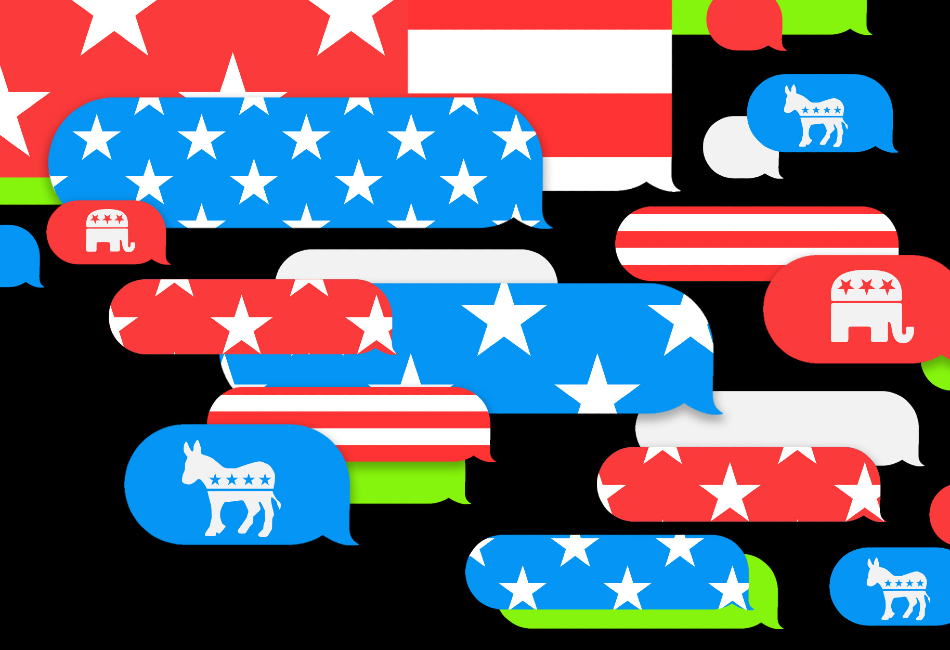The landscape of political texting is dynamic and continues to evolve with advancements in technology and changes in communication preferences. Here are some emerging trends in political texting, considering the evolving landscape and potential future developments:
Rich Media Messaging:
- Trend: The integration of rich media such as images, GIFs, and videos in political texts.
- Rationale: Enhances engagement and allows for more visually compelling communication, enabling campaigns to convey messages in a more dynamic and captivating manner.
Interactive and Chatbot-driven Campaigns:
- Trend: Increasing use of interactive elements and chatbots for two-way communication.
- Rationale: Provides voters with personalized and interactive experiences, allowing them to ask questions, get information, and engage with the campaign in a conversational manner.
AI-Powered Personalization:
- Trend: Leveraging artificial intelligence (AI) for more sophisticated personalization in messaging.
- Rationale: AI algorithms can analyze vast amounts of data to personalize messages based on individual preferences, behaviors, and demographics, creating a more tailored and relevant experience for each recipient.
Emphasis on Data Privacy and Security:
- Trend: Heightened focus on ensuring data privacy and security in political texting.
- Rationale: Growing concerns about data breaches and privacy issues necessitate campaigns to prioritize secure and compliant messaging practices, adhering to regulations such as GDPR and CCPA.
Cross-Channel Integration:
- Trend: Integrating texting efforts with other communication channels like email, social media, and phone campaigns.
- Rationale: A holistic, cross-channel strategy ensures consistent messaging and maximizes outreach, allowing campaigns to reach voters through their preferred communication channels.
Localized and Hyper-Targeted Messaging:
- Trend: Increasing emphasis on localized and hyper-targeted messaging strategies.
- Rationale: Tailoring messages to specific regions or even neighborhoods, addressing local concerns and issues, and making political campaigns more relevant to diverse communities.
Blockchain for Secure Communication:
- Trend: Exploring the potential of blockchain technology for secure and tamper-proof communication.
- Rationale: Blockchain can enhance the security and transparency of political messaging, ensuring the integrity of information and protecting against unauthorized manipulation.
Gamification Elements:
- Trend: Integrating gamification elements in political texts to increase engagement.
- Rationale: Adding gamified features, such as quizzes, challenges, or interactive polls, can make political communication more enjoyable and encourage active participation from voters.
Real-Time Analytics and Feedback:
- Trend: Increasing use of real-time analytics to monitor and adjust campaign strategies on the fly.
- Rationale: Quick access to real-time data allows campaigns to make informed decisions, adjust messaging strategies, and respond promptly to emerging issues or trends.
Optimization for Accessibility:
- Trend: A focus on making political texting campaigns more accessible to individuals with disabilities.
- Rationale: Ensuring that texts are compatible with screen readers and other accessibility tools, making political engagement more inclusive.
Multi-Language Support:
- Trend: Providing multi-language support in political texts to reach diverse linguistic communities.
- Rationale: Recognizing the importance of linguistic diversity and ensuring that campaign messages are accessible and resonant across various language preferences.
Augmented Reality (AR) Integration:
- Trend: Exploring the integration of augmented reality features in political texts.
- Rationale: AR elements can add an interactive and immersive dimension to political messaging, providing voters with unique and engaging experiences.
Regulatory Evolution:
- Trend: Ongoing evolution of regulations governing political texting.
- Rationale: Adapting to changes in privacy and communication regulations, such as updates to TCPA rules or the introduction of new legislation impacting political messaging practices.
Dynamic Content Generation:
- Trend: Use of dynamic content generation based on real-time data and recipient interactions.
- Rationale: Generating content dynamically allows campaigns to respond to evolving situations and maintain relevance throughout the campaign period.
Ethical AI Use:
- Trend: An increased focus on ethical use of AI in political texting.
- Rationale: Campaigns are expected to adopt AI responsibly, avoiding the use of algorithms that may inadvertently perpetuate bias or misinformation.
Community-Based Platforms:
- Trend: Platforms that facilitate community-based communication and engagement.
- Rationale: Recognizing the power of community-driven interactions and leveraging platforms that enable grassroots organizing and collaboration.
Educational and Informational Campaigns:
- Trend: Political texting evolving into a tool for educational and informational campaigns.
- Rationale: Providing voters with accurate and timely information on candidates, policies, and voting procedures to enhance civic education.
Ephemeral Messaging:
- Trend: Exploring the use of ephemeral messaging, where texts disappear after a certain period.
- Rationale: Adding a sense of urgency and encouraging immediate engagement with time-sensitive information.
Inclusive and Diverse Representation:
- Trend: A push for more inclusive and diverse representation in political texting campaigns.
- Rationale: Ensuring that messaging and communication strategies resonate with a broad and diverse audience.
Crisis Communication Preparation:
- Trend: Proactive preparation for crisis communication via texting.
- Rationale: Recognizing the need to have systems in place for rapid communication during unexpected events or crises.
As political texting continues to adapt to technological advancements and changing communication landscapes, campaigns will likely explore these trends to enhance engagement, responsiveness, and overall impact on voters. The future of political texting will be shaped by a combination of technological innovation, regulatory developments, and a deep understanding of evolving voter preferences.

